The dragon fruit taste is unique since the sweet flavor tends to be like a combination of a pear and kiwi. Nowadays, this tropical plant becomes more popular. The firm and crunchy pulp are wrapped with unusual pinkish-red skin with yellowish-green scales that offer an exotic sense.
Thus, this article presents everything about dragon fruit taste that including its varieties, cultivation, nutrient, and serving suggestions. Moreover, you must try some flavorful and healthy recipes with exotic pitaya.
What is Dragon Fruit?
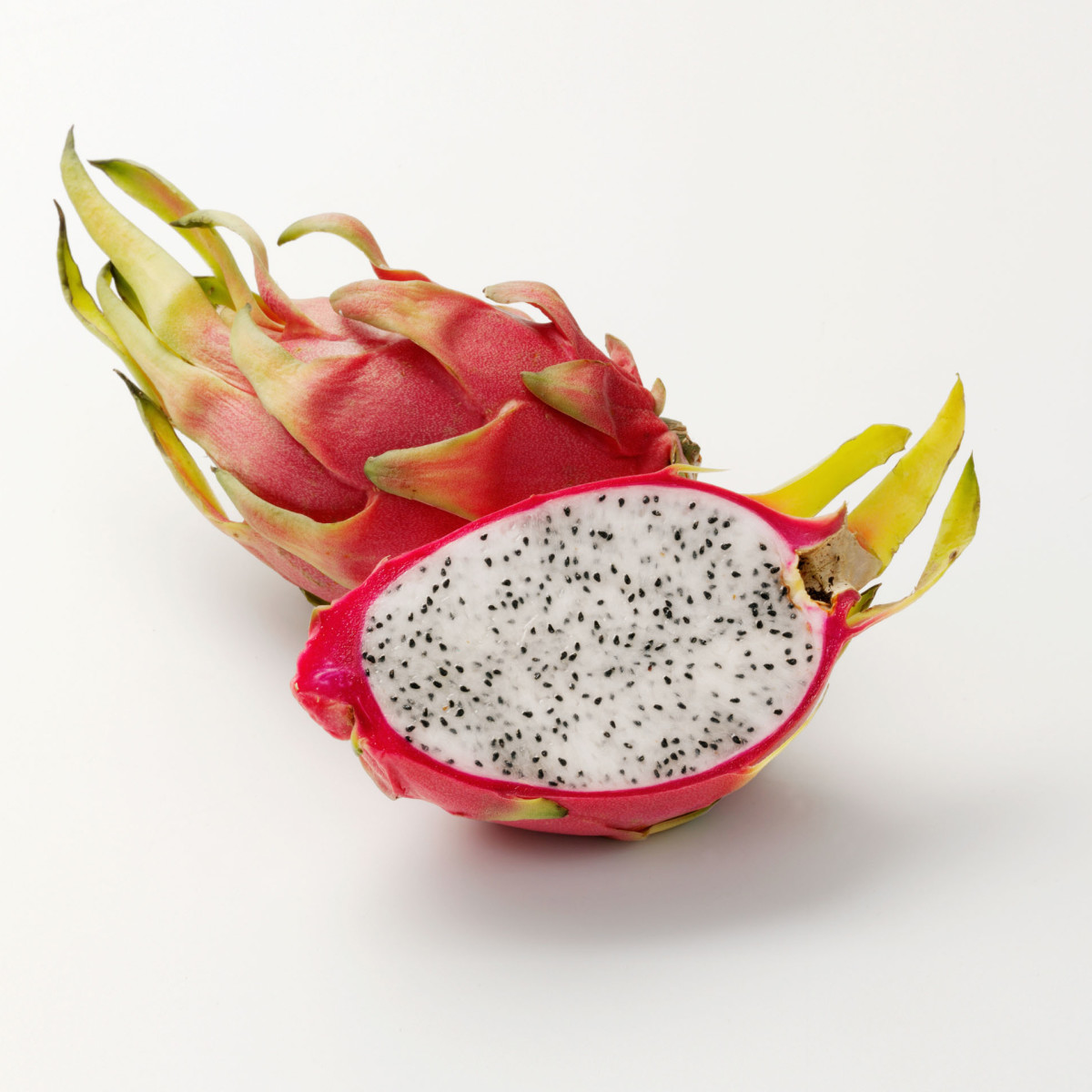
The marvelous plant develops from the Hylocereus family. This Honolulu queen cactus has blossoms that will open at night only. The night-blooming dragon fruit flower comes in large with white petals and other pale colors. Besides, they produce an aromatic scent continually.
Due to its oval shape with pointy scales that resembles a dragon, this tropical fruit got the name. Additionally, the Hylocereus is usually called pitaya or pitahaya.
Dragon fruit taste with its crunchy flesh has either white or red color. The other type comes with a magenta hue. Similar to kiwifruit, the pitaya contains many small black edible seeds. Then, the skin is mostly red, but yellow exists too.
Pitahaya becomes a fast-growing harvest that can be productive for more than 20 years. The plant with scaly skin comes natively from Asia, Florida, and Southern Mexico. Recently, the cactus with delicate dragon fruit taste has been cultivated all over countries.
How Does Dragon Fruit Taste ?
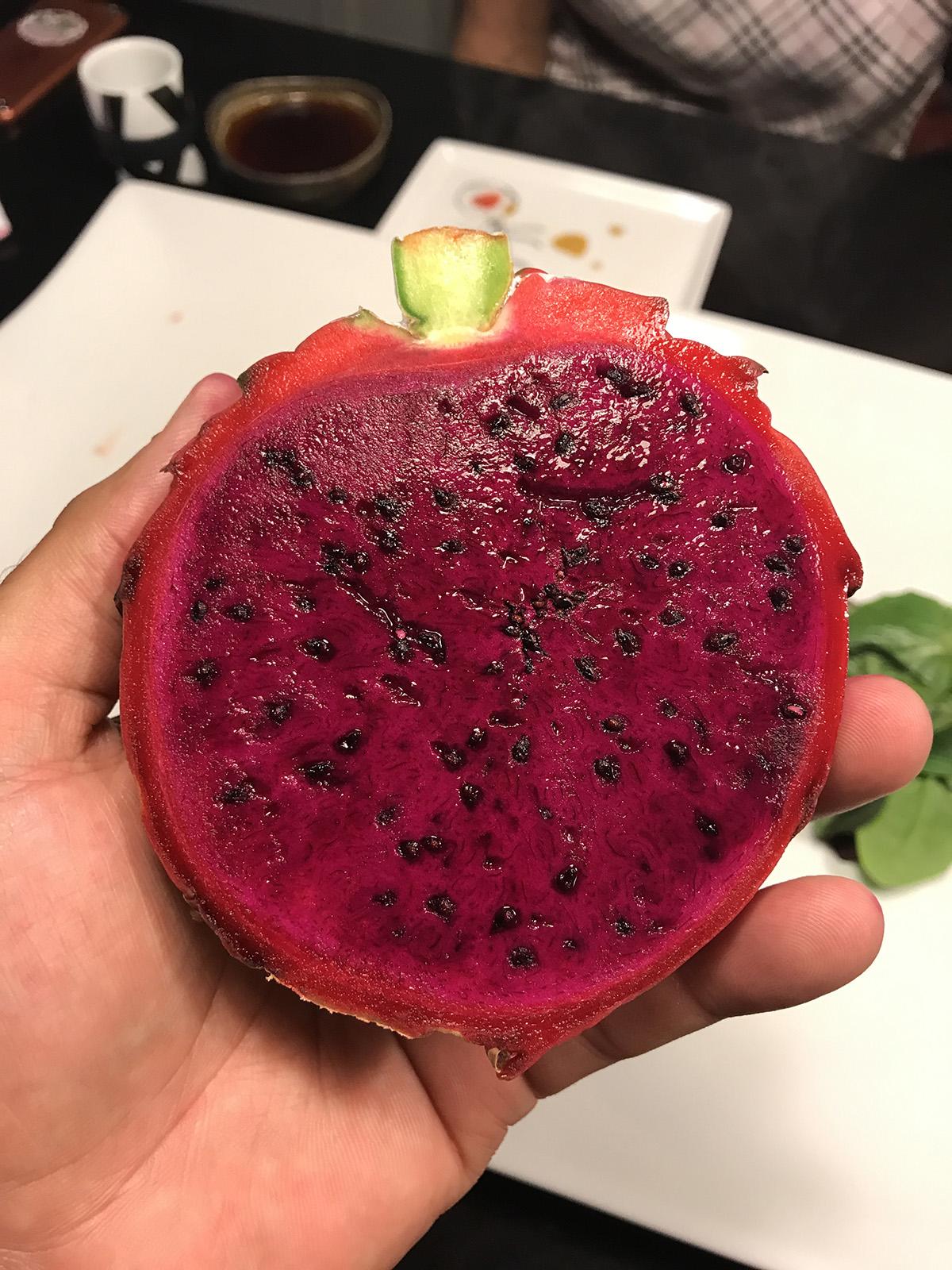
The dragonfruit taste is like a tropical flavor with sweet tasting. It is similar to a mix of kiwifruit with watermelon or pear. The solid flesh has a creamy texture.
However, the white flesh with red-skinned pitaya tastes bland, so it cannot be discerned due to its lacking strong flavor. For the yellow-skinned varieties, they are relatively sweeter and nippy.
Generally, the best dragon fruit taste is when it is fresh and ripe. To make the bland flavor better, you can add palm sugar or honey while consuming the pitahaya.
Dragon Fruit Varieties
The types of pitaya consist of two groups, the genus Hylocereus and Selenicereus. They classify the dragon fruit taste based on the colorations of their skin and flesh.
Hylocereus undatus
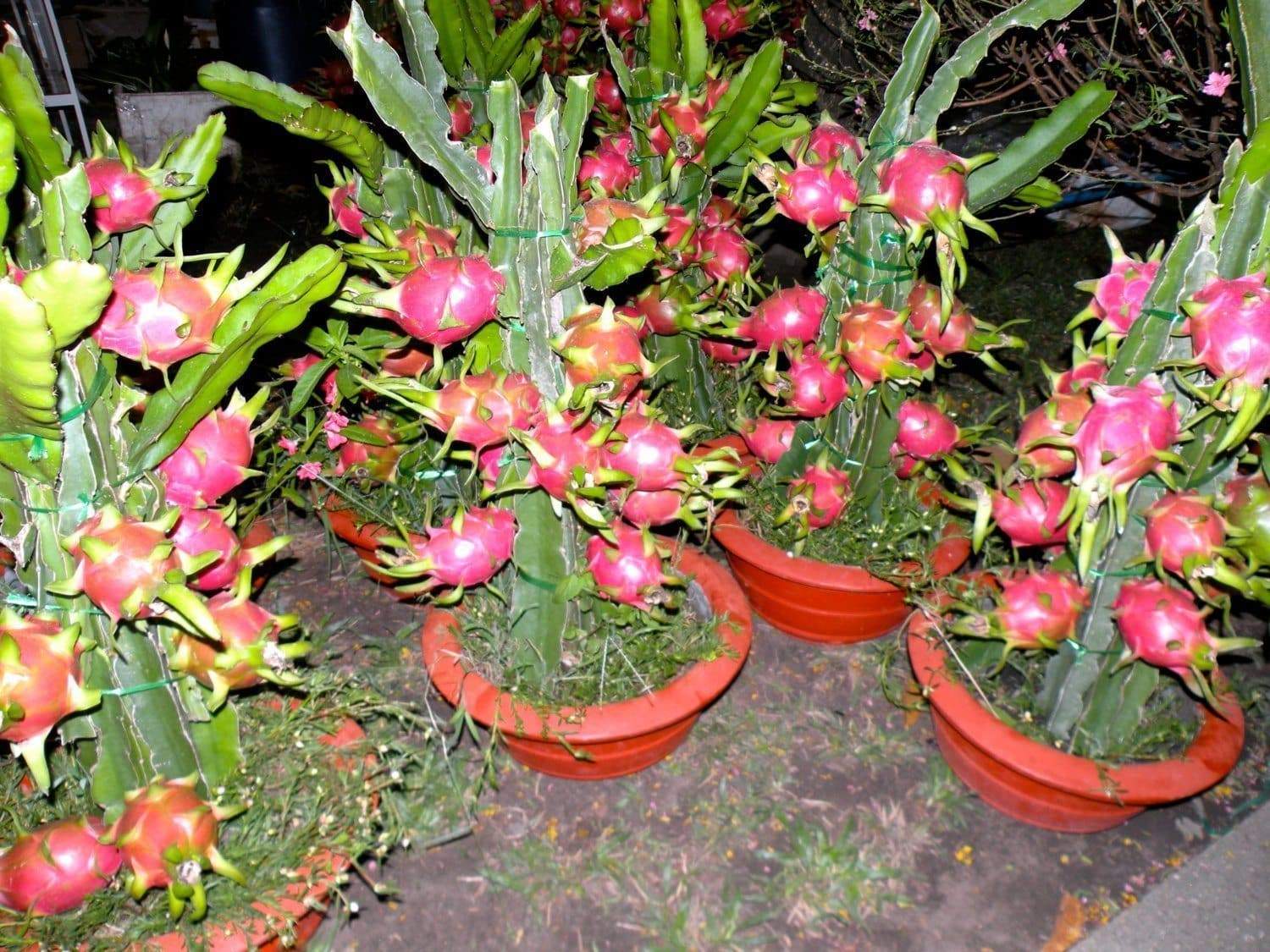
The genus Hylocereus has three species. The first is H. undatus that becomes the slightest sweet variety. Its flesh is white with pink skin. The names include Cosmic Charlie, Guyute, Seoul Kitchen, Thomson, and Vietnamese Jaina.
Hylocereus polyrhizus
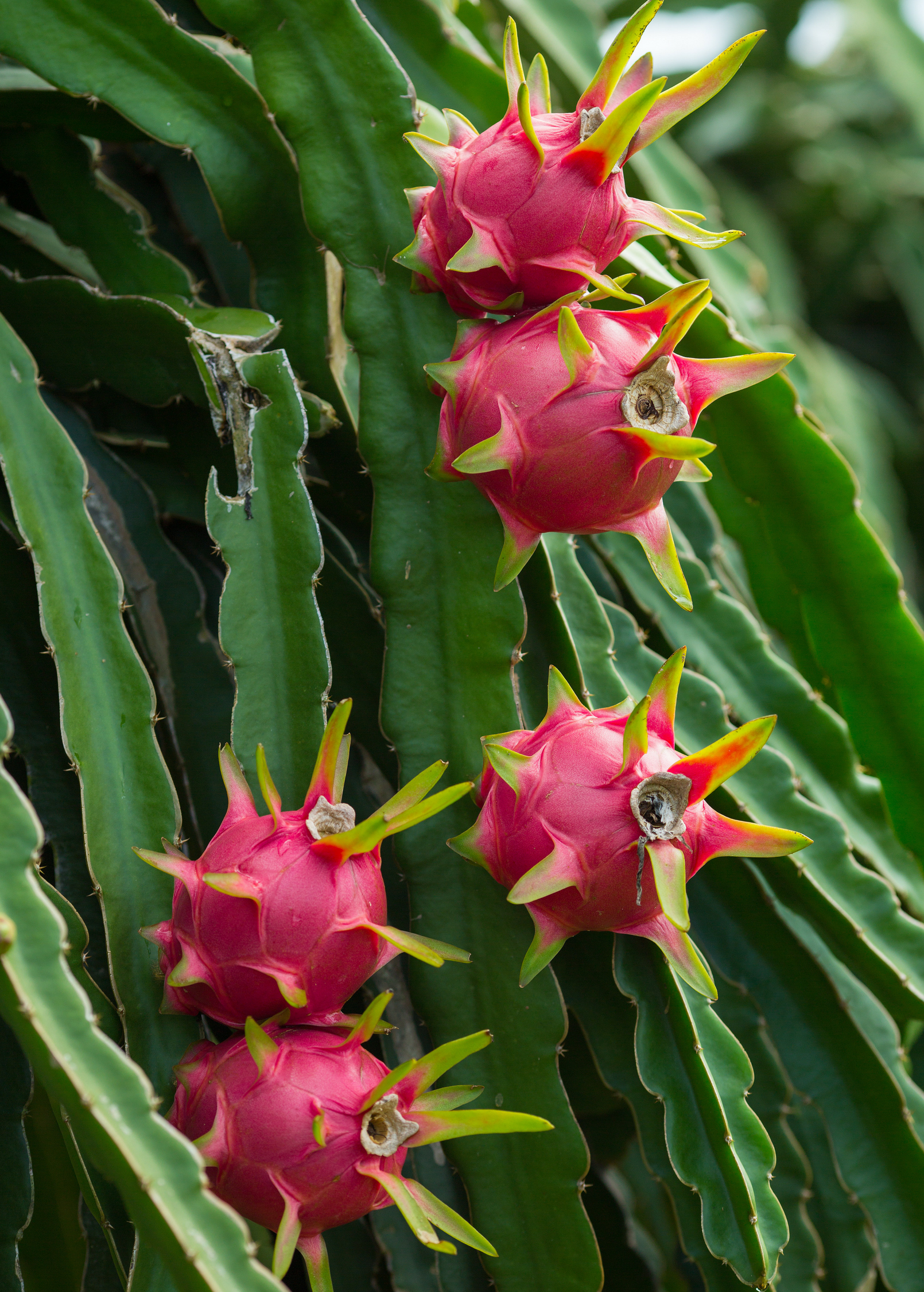
Hylocereus polyrhizus or pitaya Blanca features pink pulp and red skin. The type has a bigger size and sweeter dragon fruit taste than the ordinary varieties. Know it as Red Jaina, Voodoo Child, Blood Mary, and Zamorano.
Hylocereus guatemalensis
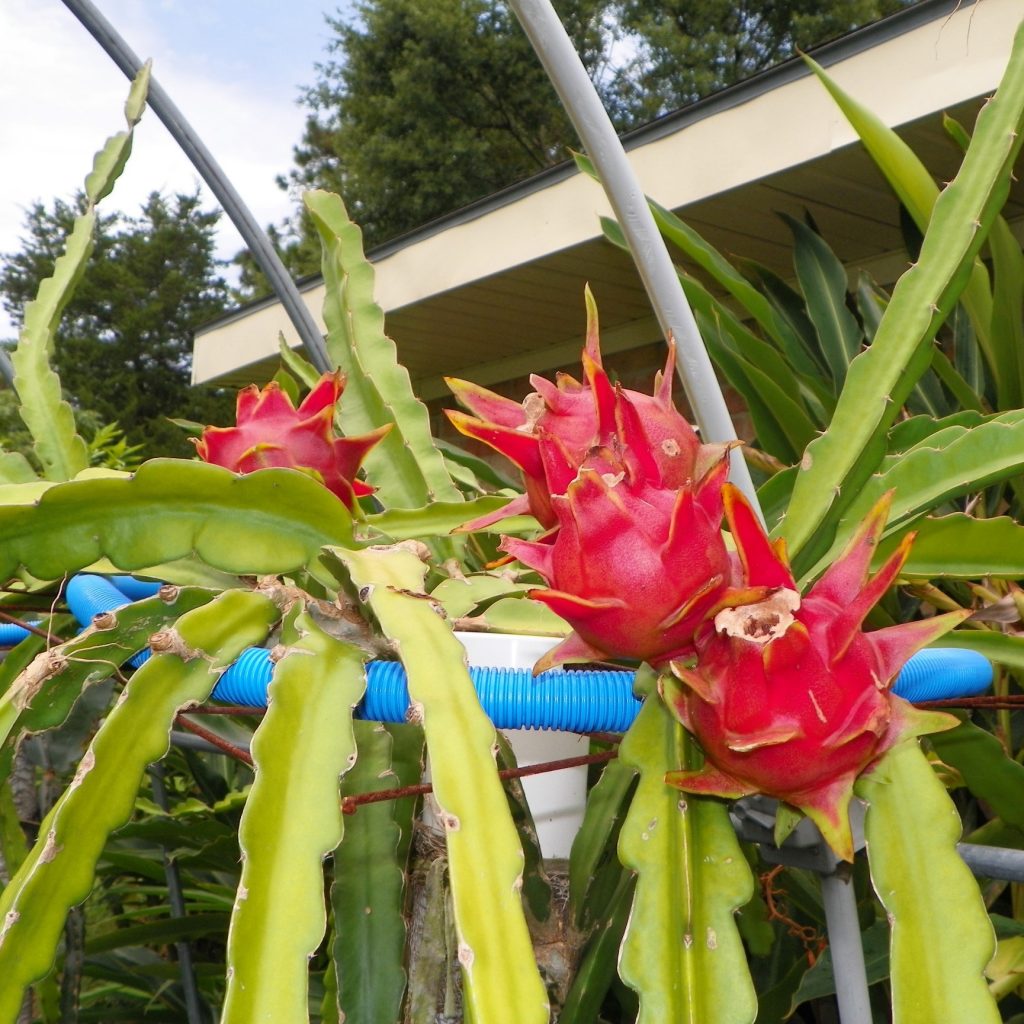
Hylocereus guatemalensis is the third species that has magenta flesh and vibrant pink skin. Another name of this type is pitaya roja. This sweet dragon fruit taste is sold as American Beauty and cultivated in Florida.
Selenicereus megalanthus
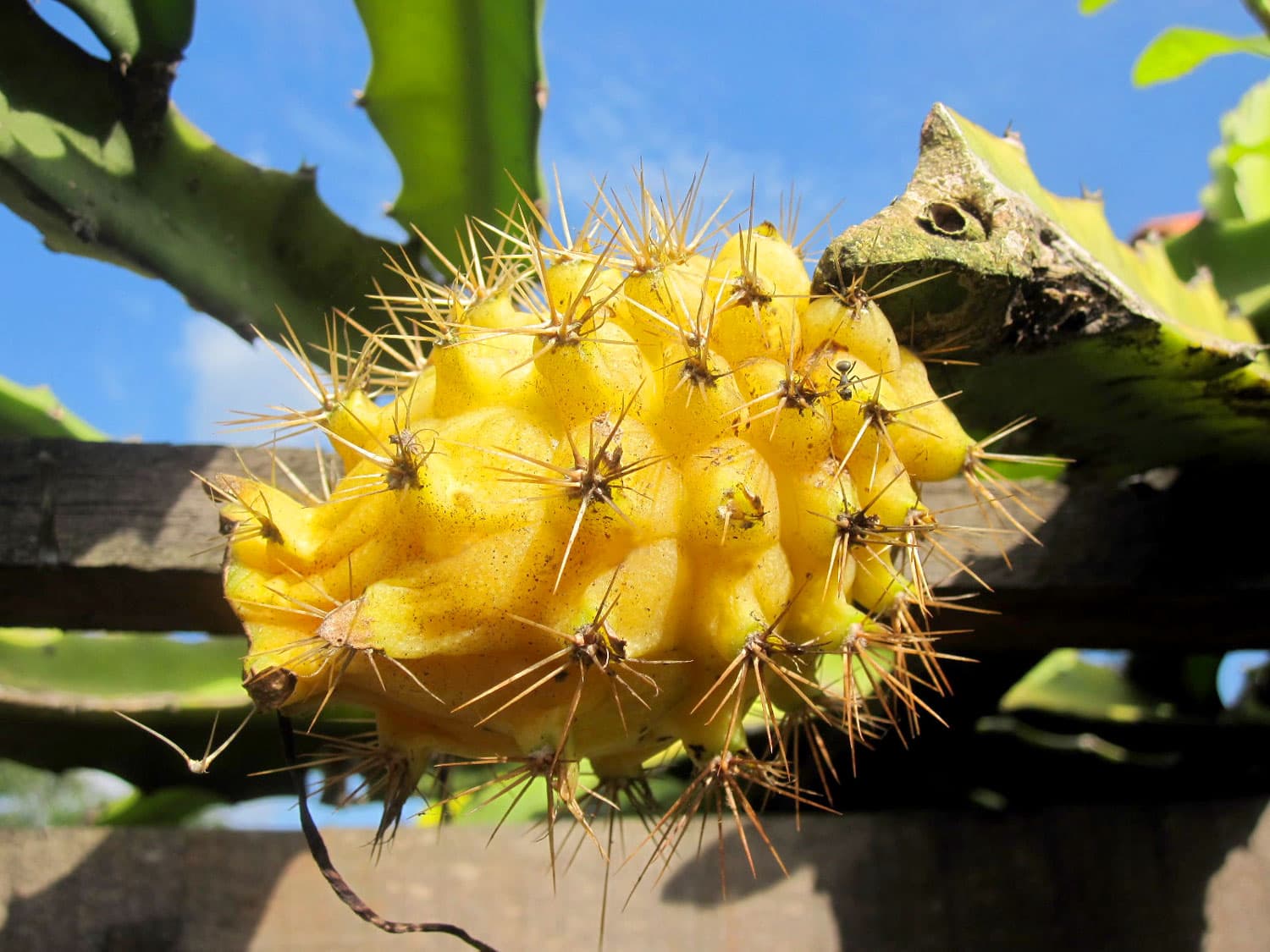
Even though being the smallest variety, Selenicereus megalanthus has the sweetest dragon fruit taste. It features white pulp and yellow skin. The largest cultivation occurs in South America.
Unfortunately, this type is not mass-yielded. Therefore, yellow dragon fruit is difficult to find in local markets. The most distinctive variety is also named as pitaya amarilla.
A Guide to Grow Dragon Fruit Plant
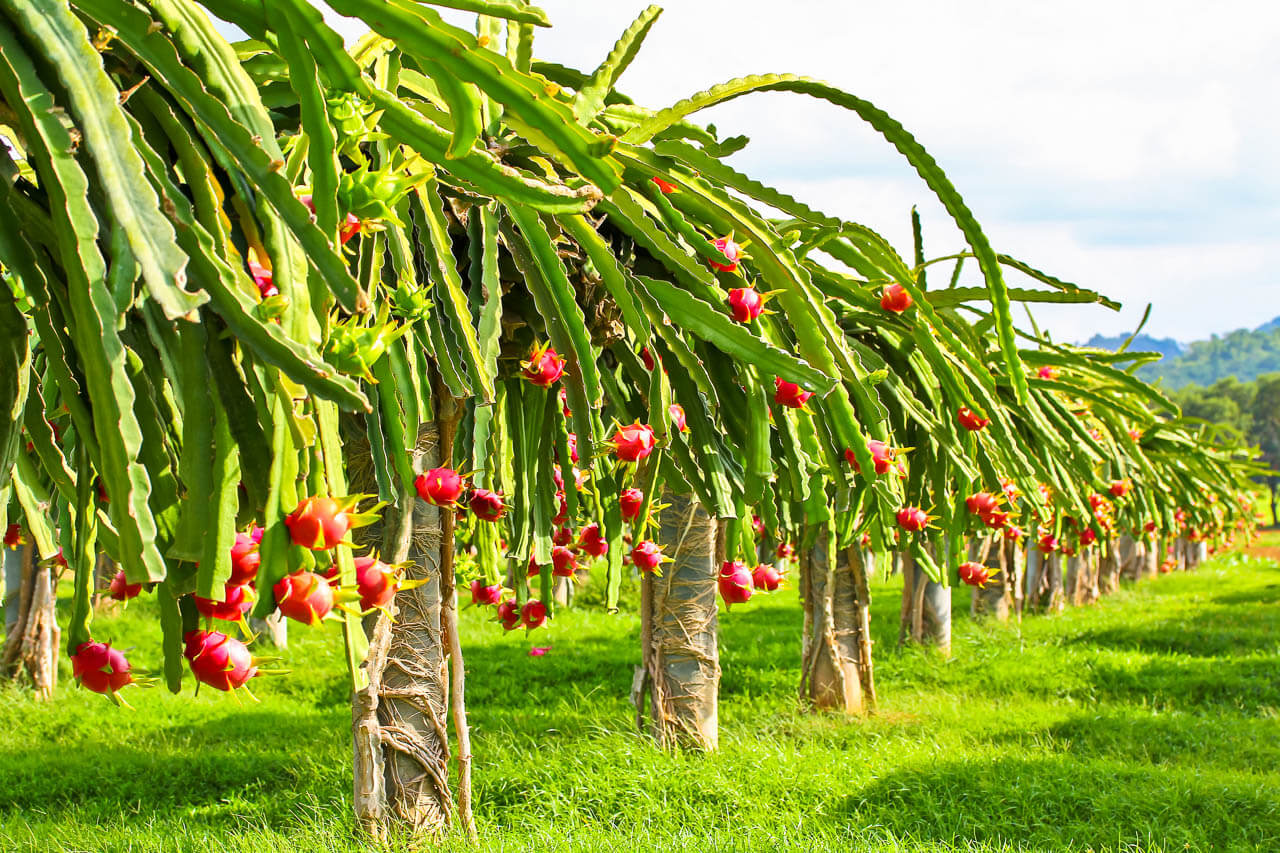
Hylocereus plant with sweet dragon fruit taste grows well in moist and warm climates with low water availability. You can start cultivating by seeds and cuttings. Growing in containers and outdoors are great ideas.
Cultivation
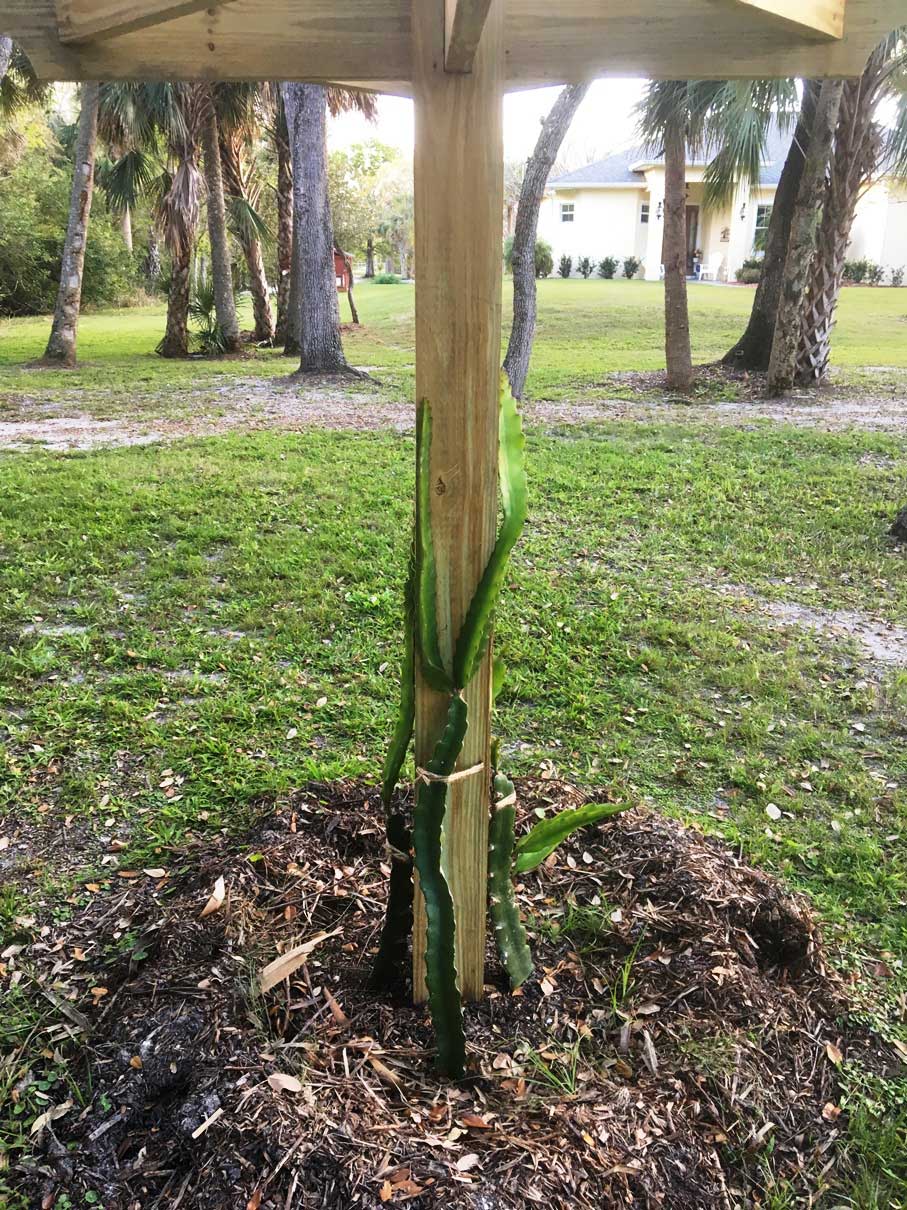
If spending lots of time on growing pitaya from seedlings is not a matter, you will require fewer tools and materials. Gather the tiny black dragon fruit seeds, then wash and dry them before planting.
Next is sowing the seeds in compost and let them germinate in 14 days. For your information, this plant takes seven years to set ripe and sweet dragon fruit taste. Therefore, it becomes the last choice of cultivation.
On the other hand, an easy way to cultivate the Hylocereus plant is by propagating from cuttings. Start to notch a 30 cm part of a dragon fruit cactus and let it dry until the cut end looks white. Plant the tree in sandy soil after the section has dried. Also, do regular watering every month.
One month later, the tree will develop its roots and keep growing until it sets the fruit. Then, the harvest time takes only three years.
For growers who live in cold areas, pots are the best media for planting. The containers are easy to move the pitaya to a warmer place. Use a minimal of 40 centimeters in diameter.
Accordingly, add a stake since the cactus is a climber. Cultivate the stem in a container with acidic soil. The best condition will make the tree grow taller and develop aerial roots.
Meanwhile, growing the pitaya plant will add color and personal touch to the garden. Therefore, transplant your potted cactus to outdoors. Clean the planting area from any weeds and stones. Apply the same soil conditions and add more compost to the beds.
Attach a fence or trellis to support the cactus, as it will grow larger when the tree is producing its sweet dragon fruit taste. Thus, some pieces of wood can hold this heavy plant.
Care for Dragon Fruit

Taking care of the pitaya does not require specific treatment. Start pruning the tree when it has the first blooming and dragon fruit season. After one year, you can cut back the young plants. Therefore, if there are some tiny shoots before flowering, trim them off.
One year later, the cactus shoots out about 30 new branches. Then, cut off the tops of each section. Do this technique during the fall season. Trim the stem from the green part to increase the buds’ growth. Then you will find more fruits develop from the pruning points.
Harvest and Storage the Crops
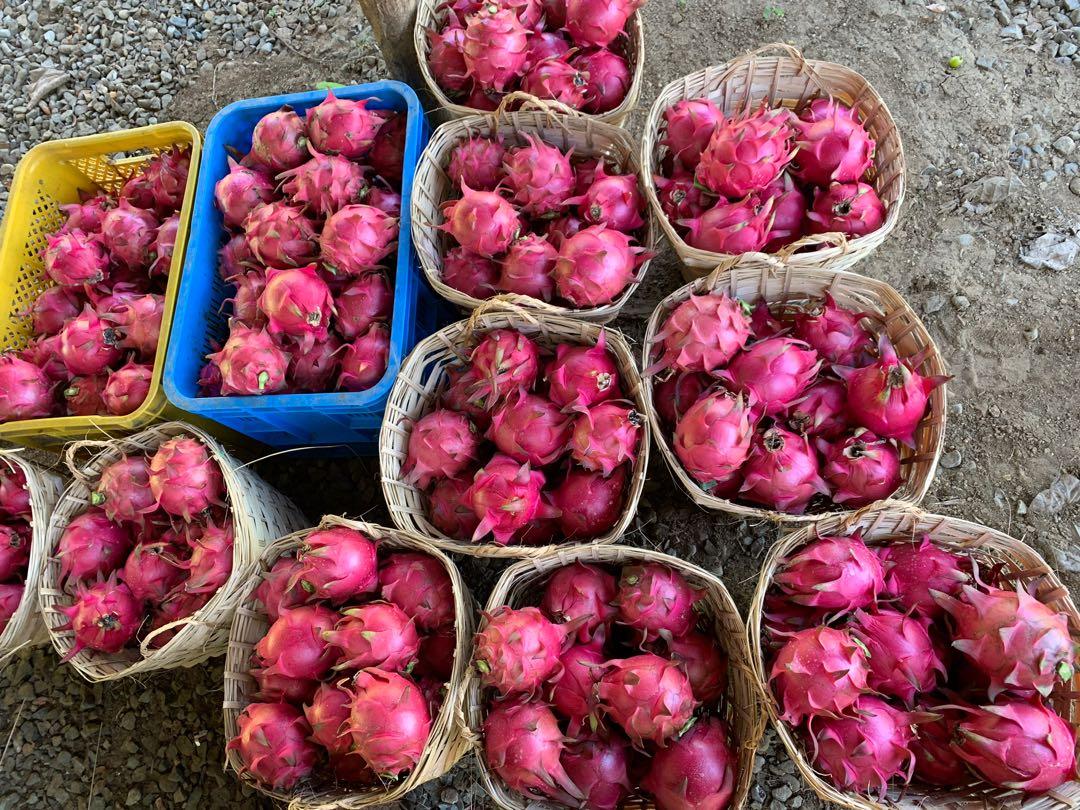
There are three ways to determine the best time for a high-yielding dragon fruit strain. Initially, look at its scaly skin directly. If it is not ripe yet, the color will be green. At maturity, the outer layer changes the hue into yellow or red based on the type.
Get the best dragon fruit taste when the ripen pitaya has a vibrant color with a few spots. Too many splotches show that it becomes overripe.
Then, determine the pointy tips of the scales to know whether they get wilt or not. When these wings start to wither and turn brown, the pitaya is ripe and ready to harvest. On the contrary, the fruits are underripe if the extended leafy parts still have bright colors (pink or yellow).
If the cactus has ripe sweet dragon fruit taste, the pitaya comes off the stem easily with a smooth bend. When overripe, it will fall to the ground by itself.
Moreover, do you know how to store the pitaya? It can stand for seven days on the shelf or table. For later use, you can keep the fruits bundled and refrigerate them.
Another way is by cutting into cubes and put them in a bag. Place the pitaya in the freezer. The dragon fruit taste will remain fresh and stay great for up to three months.
Healthy Ways to Serve Dragon Fruit
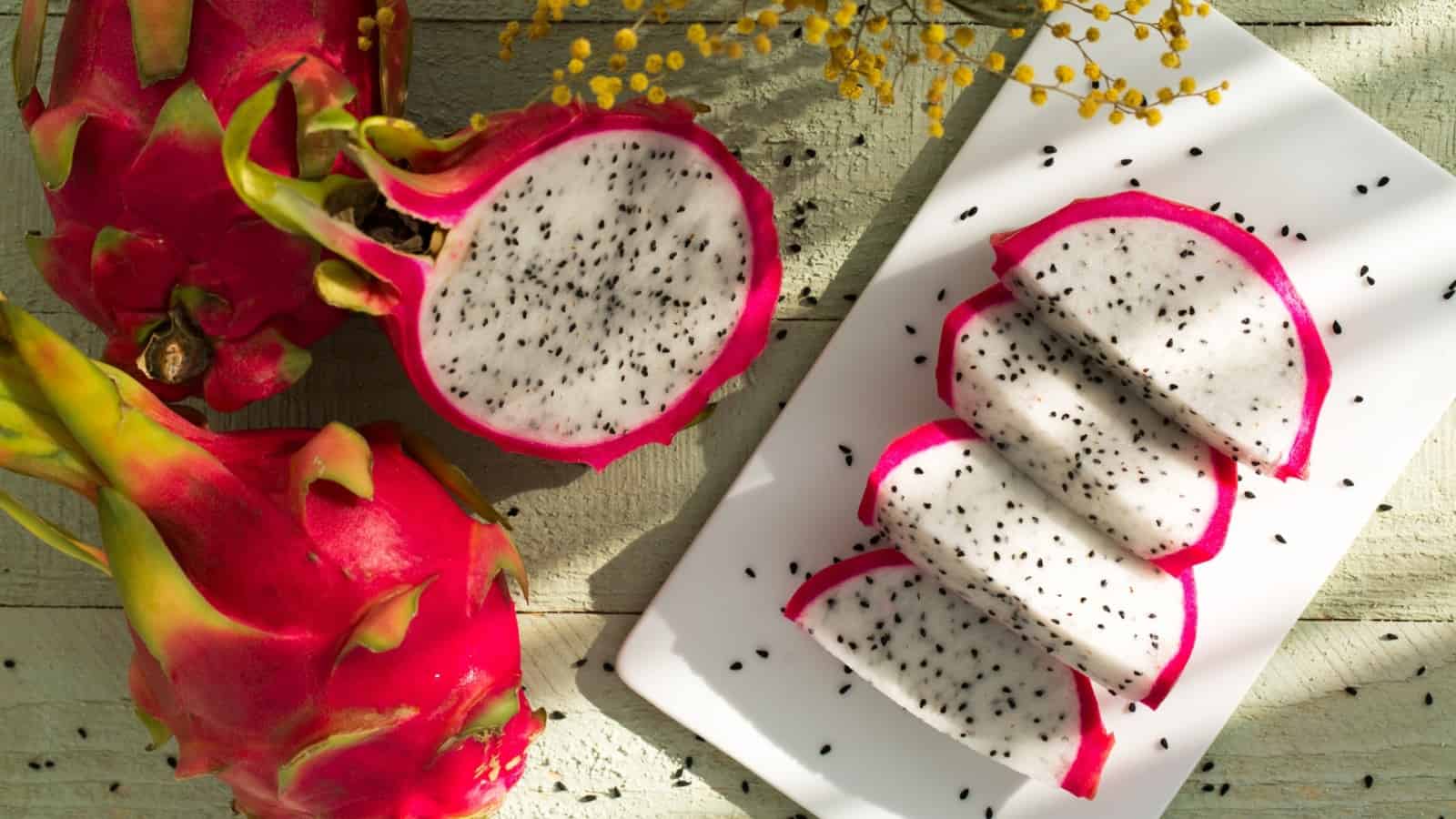
People mostly like eating raw the pitaya, but you can grill with another tropical dish. Split it or slice into several pieces to see how the ripe dragon fruit taste. The flesh will look juicy and have a solid texture. Do not consume the overripe inner pulp that is turning brown.
Then, do you know how to eat dragon fruit? Firstly, you have to peel the scaly skin. Split the pitaya with an edgy blade. After that, lift the inside pulp with a tablespoon and put it on the cutting board. Dice into cubes and move them to a serving plate.
Besides, you can directly eat the fruit by using a spoon after cutting into half. This way is simpler since the outer layer can be a natural serving bowl. Slice the flesh into small pieces and put them back to the skin shell will be a great idea.
Alternatively, use a melon-baller to get an attractive round shape.
Dragon Fruit Nutrition Facts
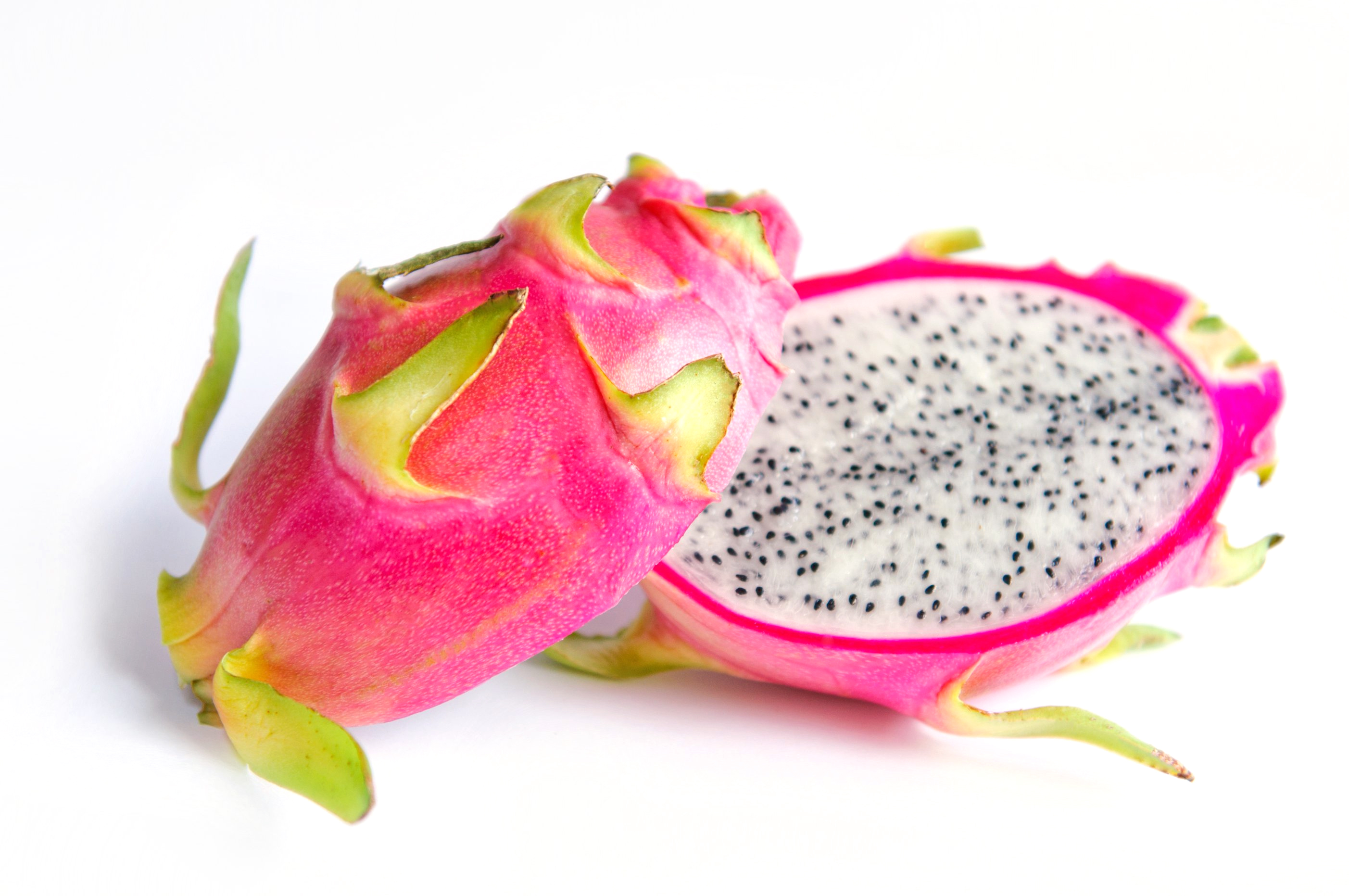
The pitaya is rich in antioxidants and nutrition, but the dragon fruit calories are low. It contains minerals, vitamins, and fiber. This compound helps to promote healthy digestion and control weight.
In the pitaya flesh, there are some types of antioxidants. They include betalains, hydroxycinnamates, and flavonoids. These substances can reduce tumors and heart valve defects. Moreover, a good dragon fruit taste comes with a modest source of iron and magnesium.
Both white and red dragon fruits offer many health benefits and improve metabolism. They can reduce insulin resistance as well as elevating the progressive development of nonpathogenic bacterial strains.
However, some cases of an allergy often happen. People without any food allergies can produce antibodies against the dragon fruit after consuming it. The symptoms include vomiting, difficult breathing, tingling, and hives.
Moreover, instead of enjoying nutritious and delicious dragon fruit taste, you can use it in your skincare medication. Make a homemade mask with this ingredient. Then, add honey and olive oil to create a good mixture.
Massive nutrition means the price also expensive, Want to know why is a dragon fruit is so expensive?
Use the dragon fruit mask for a quarter-hour. Wash it off and feel the face more soothing. The natural skincare also becomes a moisturizer and anti-acne cleanser. Moreover, this combination functions as a hair treatment to strengthen the filaments.
Delicious Recipes with Dragon Fruit
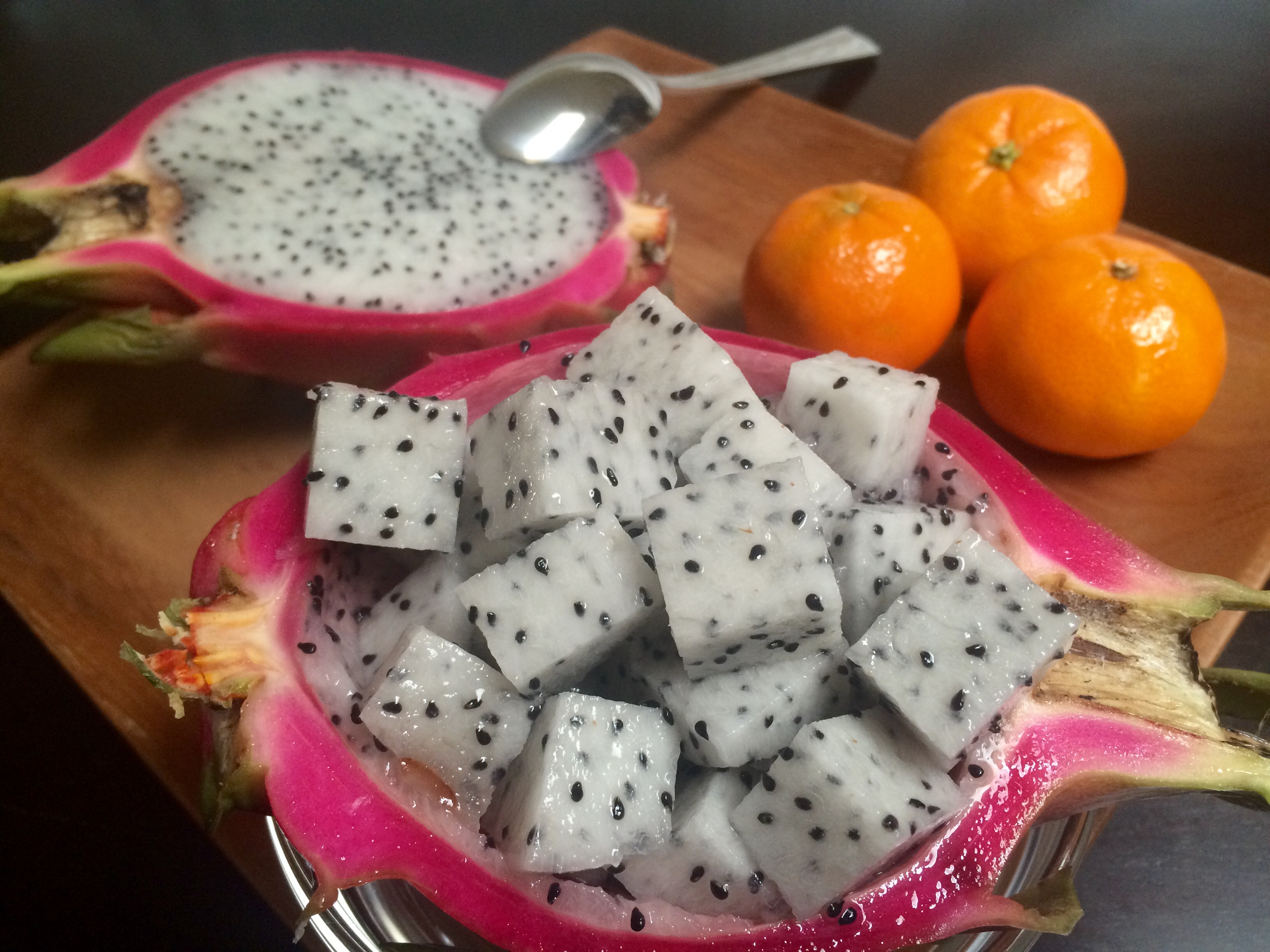
Dragon fruit taste will be more delicious when it pairs with fish like tuna, cod, and mahi-mahi. Use this natural ingredient as a salsa topping. You can combine the pitaya with other tropical dishes. Mix with papaya, mango, or pineapple to make tasty drinks and desserts.
Dragon Fruit Frozen Sorbet
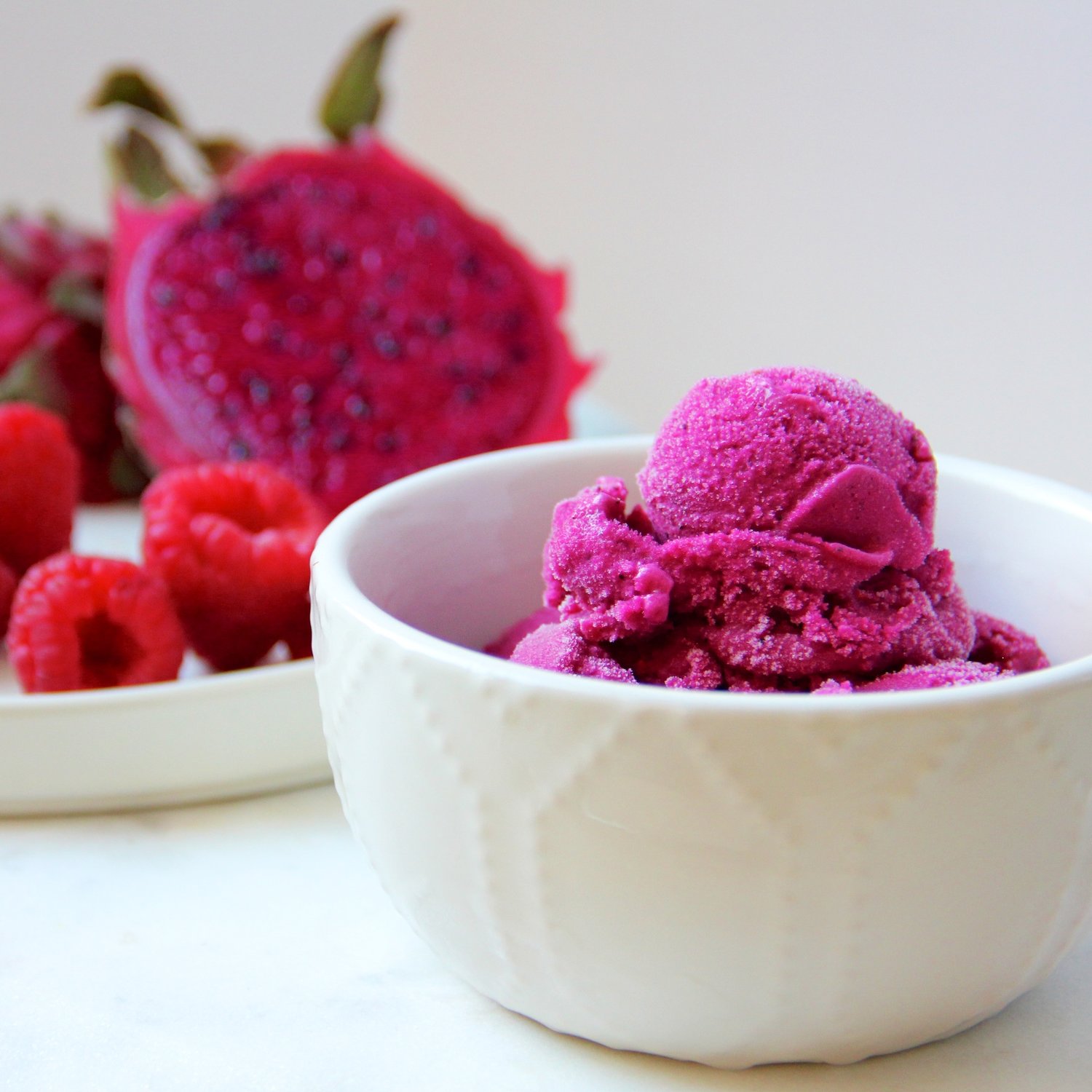
Enjoy dragon fruit taste in the form of a cooling and refreshing sorbet. This easy recipe only needs four ingredients. Use the magenta-fleshed pitaya to mix with freshly squeezed lemon, iced water, and honey.
The first step is peeling the outer layer from the pulp. Then, feel free to choose the way on how to cut dragon fruit. Next, put the cut pieces in a food grinder or chopper. Add other materials and blend to make a thick paste.
Move the puree to an ice cream maker and stir until frozen. After that, place the paste in a container and freeze it for several hours. Serve one or two scoops of dragon fruit sorbet in a bowl.
Dragon Fruit Smoothie
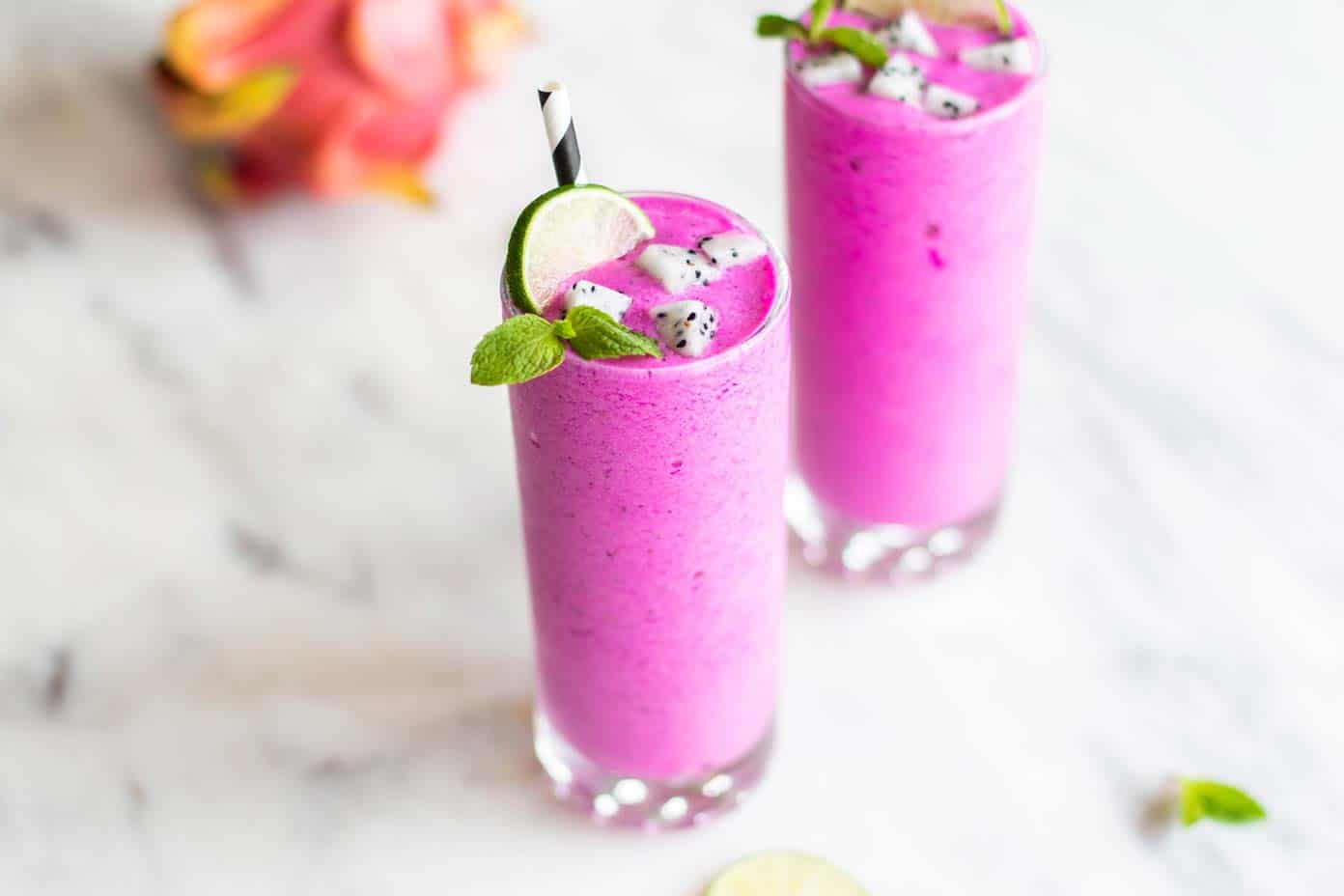
To make pitaya smoothie, combine dragon fruit taste with bananas, grapefruits, and berries. Firstly, keep them frozen in the freezer. The next step is preparing to blend a mixture.
Put the frozen fruits into a blender. Add almond or coconut milk, lime juice, and whey protein powder. It will give a milky and smooth taste. Blend all ingredients and pour the smoothies into a glass. Add a slice of lime, white pitaya cubes, and mint leaves as toppings.
Thai Fruit Salad Recipe
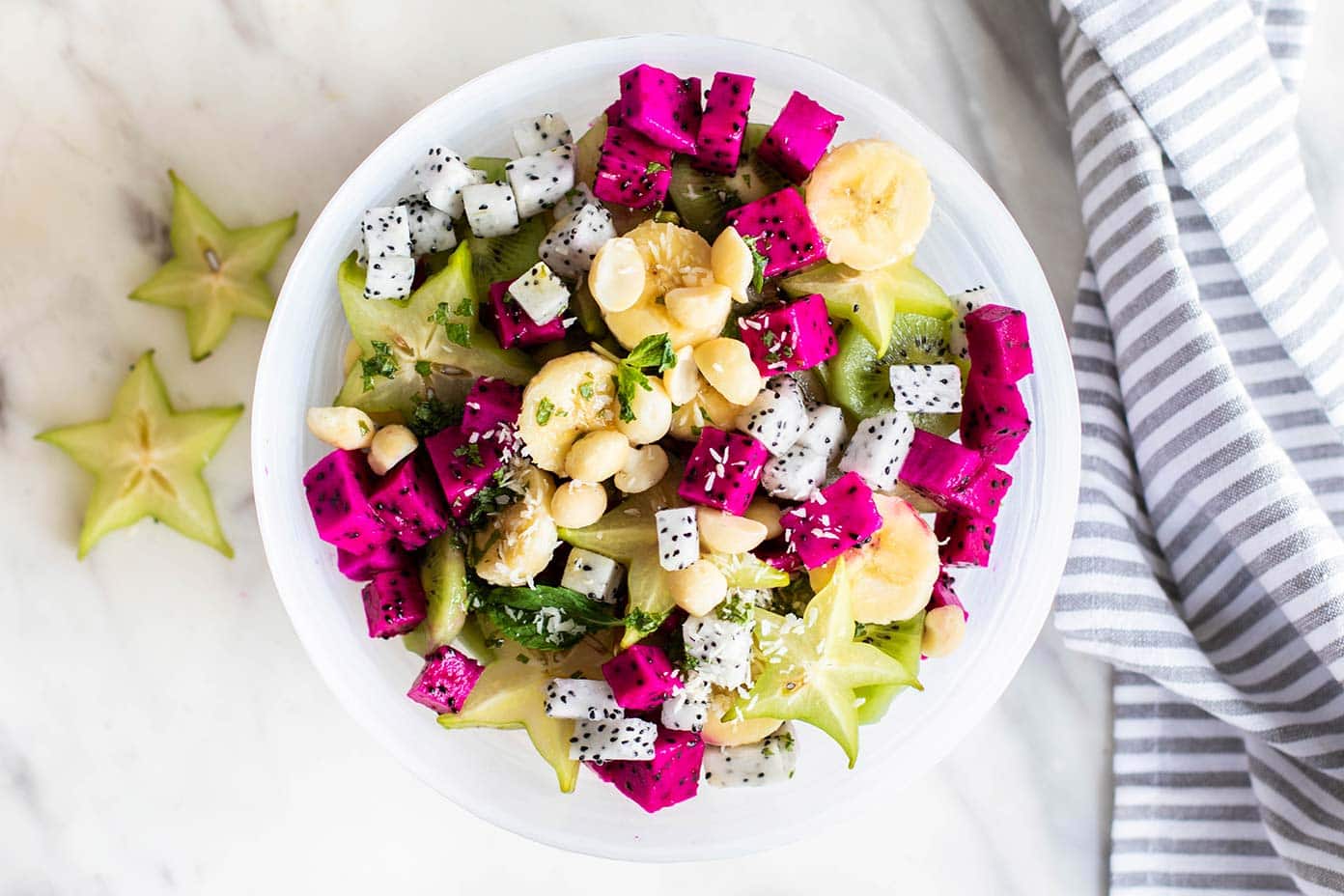
The colorful Thai salad recipe brings a delightful dragon fruit taste. Choose any tropical and natural ingredients to combine with the pitaya. Enhance the flavor by adding the coconut-lime dressing.
Prepare the ingredients such as pineapple, star fruits, banana, mango, lychee, and strawberries. Peel and slice the fruits. Set aside and continue to prepare the salad sauce.
You need coconut milk, lime juice, and sugar to make the dressing. Stir until all ingredients are mixed well. Then, put your sliced fruits in a serving plate and add the sauce.
For an impressive presentation, arrange the Thai salad in a boat of pineapple. Thus, the skin shell becomes a unique serving bowl for the dish. For the final addition, garnish it with some slices of star fruit. You can keep the dessert in the fridge’s crisper drawer to consume later.
Finally, the great dragon fruit taste of the pitaya gives a luscious flavor as well as providing some beneficial uses. Although it may cause n allergy, this tropical plant is very versatile. Additionally, easy-to-grow and low-maintenance techniques let you enjoy the freshness anytime.